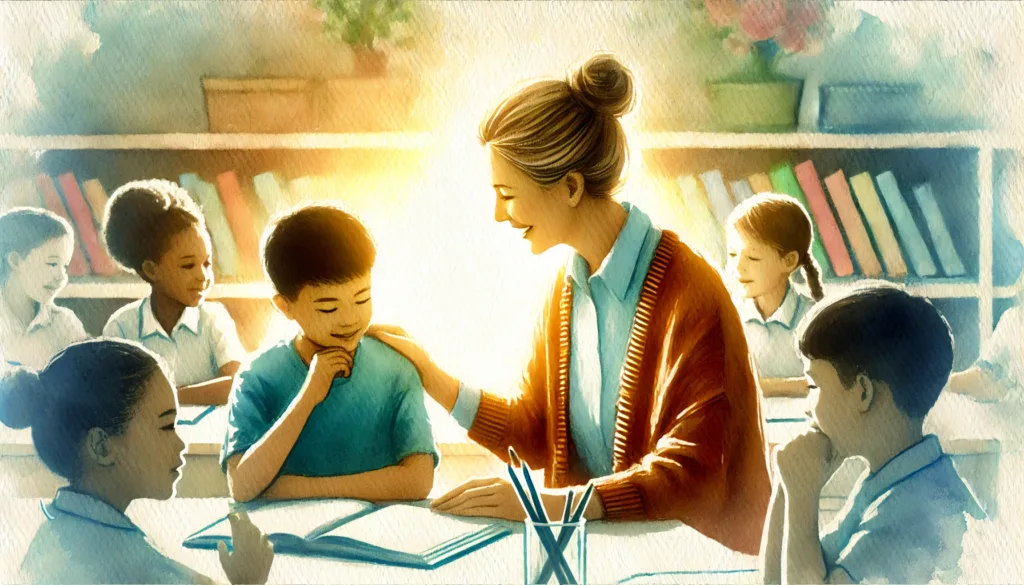
Are you tired of information slipping through your mental fingers like sand? In today’s data-saturated world, it’s harder than ever to make information stick. But what if there was a way to make your ideas unforgettable? The answer lies in the age-old art of storytelling. In fact, research shows your brain is a staggering 650% more likely to remember information wrapped in a story than dry statistics alone. This article dives into the fascinating science of storytelling, exploring how narratives rewire your brain, why they’re so much more effective than raw data, and how you can harness this power to enhance memory and communication. Whether you’re an educator, a business professional, or simply someone looking to improve your memory, this guide is for you.
The Evolution of Human Storytelling
Storytelling isn’t just an ancient art; it’s a fundamental part of what makes us human. From the flickering flames of prehistoric campfires to the glowing screens of today, stories have been our primary tool for survival, preserving history, passing down wisdom, and forging connections across generations.
Historical Significance
- Prehistoric Origins and Survival Value: Long before the written word, oral storytelling was the primary means of transmitting knowledge and cultural values. Stories helped early humans understand their world, learn from the experiences of others, and navigate the challenges of survival. Cave paintings, dating back tens of thousands of years, serve as early examples of visual storytelling.
- Development from Oral Traditions to Digital Narratives: As civilizations developed, so did the methods of storytelling. The invention of writing allowed stories to be recorded and shared more widely. The printing press revolutionized the distribution of written narratives, and the rise of photography, film, radio, and television brought new dimensions to audio-visual storytelling. Today, the internet and social media have created unprecedented opportunities for interactive and immersive narratives, from e-books and audiobooks to virtual and augmented reality experiences.
- Cultural Transmission Across Generations: Stories are the threads that weave together the fabric of culture. They transmit values, beliefs, and traditions from one generation to the next, shaping our understanding of the world and our place in it.
- The Biological Advantage of Narrative Learning: Our brains are wired to learn through stories. Narratives provide context, emotion, and meaning, making information more engaging and memorable than raw data alone. This biological advantage has played a crucial role in our survival and cultural development.
The Neuroscience of Narrative: How Stories Hijack Your Brain
Neuroscience reveals that narratives don’t just entertain us; they rewire our brains, turning fleeting facts into lasting memories. When you hear a story, your brain doesn’t just listen; it experiences.
The Neural Dance
- Neural Coupling Phenomenon: When a speaker tells a story and a listener actively engages, their brain activity begins to synchronize. This “neural coupling” occurs in language processing areas and networks involved in conceptual understanding.
- Mirror Neurons and Emotional Synchronization: Stories activate mirror neurons, allowing us to experience the emotions and thoughts of the characters vicariously. This emotional synchronization creates a deeper connection with the narrative and enhances memory.
- Brain Regions Activated During Storytelling: Storytelling and comprehension recruit extensive bilateral networks in the brain, not just language areas. There is significant overlap between production and comprehension systems.
- The Role of the Hippocampus and Amygdala: The hippocampus, your brain’s memory architect, lights up when you hear a story, alongside emotional centers like the amygdala. These regions work together to encode and consolidate narrative information into long-term memory.
The Chemical Cocktail
Stories trigger the release of a cocktail of neurotransmitters that enhance memory and emotional engagement.
- Dopamine’s Role in Attention and Reward: Dopamine influences cognitive functions like attention, motivation, and reward processing, which are important for engaging with narratives. It modulates activity in brain regions involved in narrative comprehension, such as the prefrontal cortex and striatum, and contributes to memory formation and consolidation of narrative information.
- Oxytocin’s Impact on Empathy and Connection: Oxytocin, often called the “empathy hormone,” facilitates social cognition and emotional engagement with characters and social aspects of narratives. It enhances memory for social information within stories and modulates activity in brain regions involved in social processing and emotional responses.
- Serotonin’s Influence on Emotional Engagement: Serotonin interacts with dopamine to modulate learning and memory processes related to narrative comprehension. It affects mood and emotional responses to narrative content and influences activity in brain regions like the hippocampus that are crucial for memory encoding.
- How These Chemicals Enhance Memory Formation: The interactions between these neurotransmitter systems and brain networks allow for the integration of cognitive, emotional, and social aspects of narrative comprehension, leading to a rich and memorable story experience.
The Memory Gap: Stories vs. Statistics
Why do stories stick while statistics fade away? The answer lies in the way our brains process and retain information.
The 90% Problem
- Why Raw Data Disappears from Memory: A staggering 90% of information we encounter vanishes within days. This is because raw data lacks the context, emotion, and meaning that our brains crave.
- The Context Deficit in Traditional Information: Without context, even vital details slip through the cracks of our overstuffed minds. Our brains reject spreadsheets and bullet points like expired milk because they lack the narrative framework that makes information meaningful.
- How Stories Provide Memorable Frameworks: Stories provide a framework for understanding and remembering information. They create a narrative arc with a beginning, middle, and end, making connecting the dots and retaining the key details easier.
- Statistical Evidence of Narrative Retention: Research shows that facts are 20 times more likely to be remembered if they’re part of a story compared to just facts alone. Participants who constructed stories remembered 6-7 times more words than those who learned from a random list. Students remembered stories associated with statistics at a rate of 63%, while only 5% remembered individual statistics.
The Emotional Anchor
- Results from the 20,000-Person Study: In a groundbreaking study, researchers passed stories through 20,000 people like a global game of telephone. The results were astonishing: the emotional core of the stories remained intact, even as the plot twisted beyond recognition.
- Emotional Core Preservation: Joy, shock, heartbreak – these feelings persisted with near-perfect fidelity, proving that emotionally charged stories aren’t just remembered; they’re biologically immortalized.
- Why Feelings Outlast Facts: Our brains discard cold facts but cling to the feeling stories evoke. This is because emotions act as powerful memory anchors, making it easier to recall the details of a narrative.
- The Role of Emotional Resonance in Memory: When a story resonates with our emotions, it creates a deeper connection that enhances memory and recall. The more emotionally engaged we are with a story, the more likely we are to remember it.
The Three Pillars of Story-Based Memory
Stories stick because they engage multiple brain regions simultaneously, trigger neurochemical cocktails that flag memories as “keep forever,” and exploit our innate love for structure, turning chaos into meaningful arcs.
Multi-Regional Brain Engagement
- How Stories Activate Multiple Neural Networks: Stories activate multiple neural networks in the brain, including language processing areas, emotional centers, and sensory regions.
- The Power of Sensory Integration: Stories create a more immersive and memorable experience by engaging multiple senses.
- Visual and Emotional Processing Centers: Stories activate the brain’s visual and emotional processing centers, enhancing memory and recall.
- Memory Consolidation Pathways: Storytelling activates multiple brain regions, strengthening memory consolidation pathways and making it easier to retrieve information later.
Neurochemical Memory Tagging
- The “Keep Forever” Chemical Signals: Stories trigger the release of neurotransmitters like dopamine, oxytocin, and serotonin, which act as “keep forever” chemical signals, flagging the memories as important and worth retaining.
- Long-Term Potentiation Through Storytelling: Storytelling promotes long-term potentiation, a process that strengthens the connections between neurons, making it easier to recall the information in the future.
- Emotional Marking of Important Information: Emotions act as memory markers, making it easier to recall the details of a story.
- The Role of Dopamine in Attention and Recall: Dopamine plays a crucial role in attention and recall, helping us focus on the important details of a story and retrieve them later.
Natural Pattern Recognition
- How Stories Create Meaningful Structures: Stories provide a structure for understanding and remembering information. They create a narrative arc with a beginning, middle, and end, making connecting the dots and retaining the key details easier.
- The Brain’s Preference for Narrative Arcs: Our brains are wired to recognize and remember patterns. Stories provide a natural pattern that makes information more engaging and memorable.
- Converting Chaos into Coherent Meaning: Stories help us convert chaos into coherent meaning, making it easier to understand and remember complex information.
- Pattern-Based Memory Enhancement: Stories enhance memory and recall by exploiting our natural pattern recognition abilities.
Practical Applications
The science of storytelling has practical applications in a wide range of fields, from education to business.
Educational Settings
- Classroom Implementation Strategies: Teachers can use storytelling to make their lessons more engaging and memorable. By incorporating narratives into their lectures, they can capture students’ attention and enhance their understanding of the material.
- E-Learning and Digital Storytelling: E-learning platforms can use digital storytelling techniques to create more immersive and engaging learning experiences.
- Memory Retention Statistics: Research shows that students retain up to 65% of information when taught through storytelling, compared to only 10% through traditional text-based methods.
- Case Studies of Successful Story-Based Learning: Numerous case studies have demonstrated the effectiveness of story-based learning in improving student outcomes.
Business Communications
- Presentation Techniques: Business professionals can use storytelling to make their presentations more engaging and persuasive. By incorporating narratives into their presentations, they can capture the audience’s attention and make their message more memorable.
- Marketing Applications: Marketers can use storytelling to connect with their target audience on an emotional level. By crafting compelling narratives, they can build brand loyalty and drive sales.
- Leadership Storytelling: Leaders can use storytelling to inspire and motivate their teams. By sharing personal stories and anecdotes, they can build trust and create a sense of shared purpose.
- Data Presentation Through Narrative: Data can be presented in a more engaging and memorable way by weaving it into a compelling narrative.
The Dark Side of Narrative Power
While storytelling is a powerful tool for good, it can also be used for manipulation and misinformation.
Misinformation Through Storytelling
- How False Narratives Spread: False narratives can spread quickly and easily through social media and other channels.
- The Responsibility of Storytellers: Storytellers have a responsibility to ensure that their narratives are accurate and truthful.
- Protecting Against Manipulation: It’s important to be aware of the potential for manipulation through storytelling and to critically evaluate the narratives we encounter.
- Fact-Checking in the Story Age: In the age of misinformation, fact-checking is more important than ever. We need to be vigilant about verifying the accuracy of the stories we hear and share.
Conclusion
The science of storytelling reveals the profound impact that narratives have on our brains and our memories. By engaging multiple brain regions, triggering neurochemical cocktails, and exploiting our innate love for structure, stories create a powerful and lasting impression. Whether you’re an educator, a business professional, or simply someone looking to improve your memory, harnessing the power of storytelling can help you make your ideas unforgettable. As we’ve seen from the research, including the striking statistic that your brain is 650% more likely to remember information wrapped in a story, the benefits are undeniable. So, embrace the art of storytelling and unlock the full potential of your brain.

